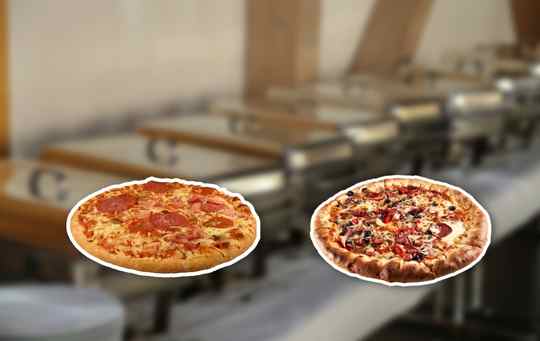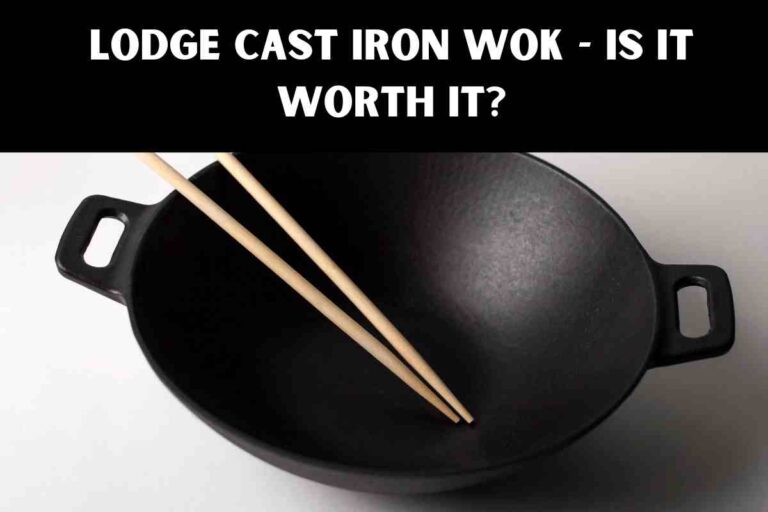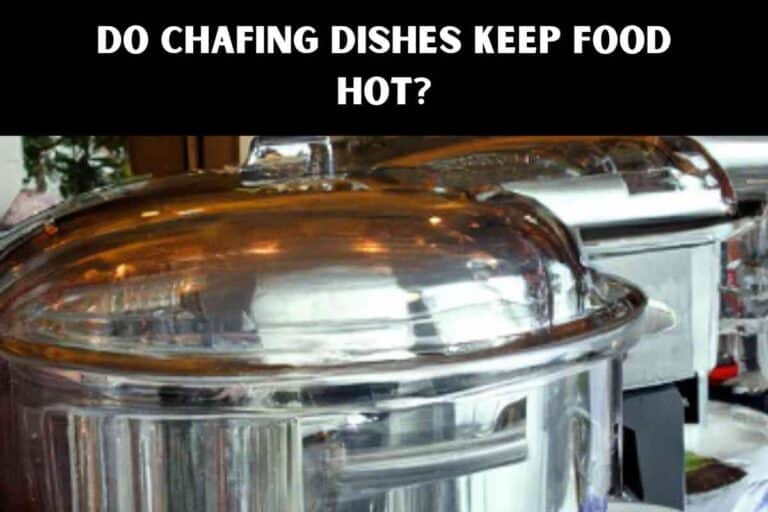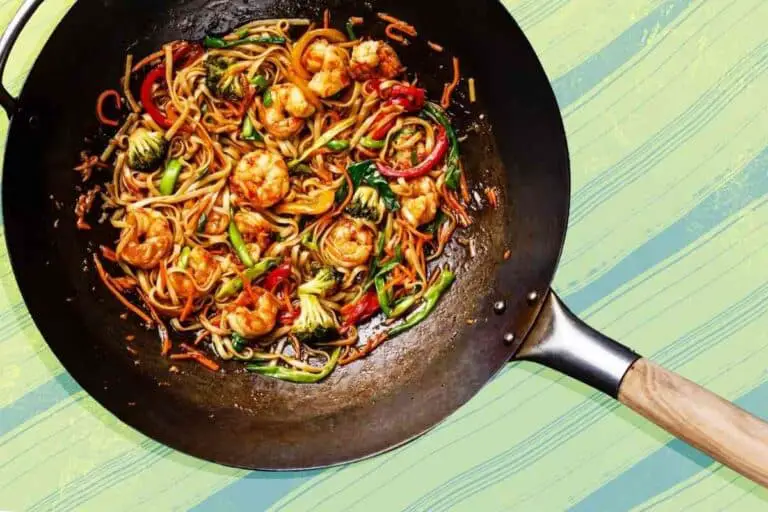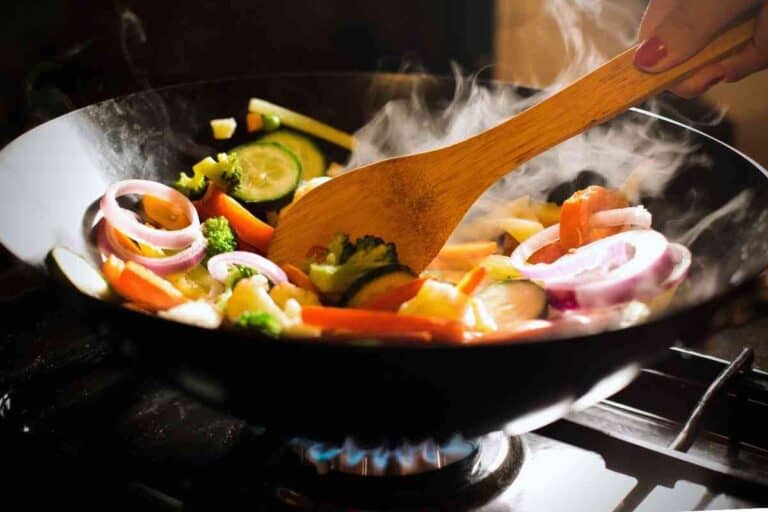Can You Cook Food In A Chafing Dish?
No, chafing dishes are not designed for cooking food. They are intended solely for keeping already cooked food hot or warm. Cooking in a chafing dish is not recommended for optimal food safety and quality.
Cooking food in a chafing dish is not recommended, as its primary function is to keep pre-cooked food hot or warm.
Attempting to cook in it may lead to uneven cooking and safety concerns. Properly using chafing dishes enhances food quality and safety during serving.
3 Aspects About Cooking Food In A Chafing Dish
| Aspects | Description |
|---|---|
| Functionality | Chafing dishes are primarily designed for keeping pre-cooked food hot or warm, not for cooking. |
| Safety Concerns | Attempting to cook in a chafing dish may lead to safety risks, including inadequate temperature control and potential foodborne illnesses. |
| Maintenance | Cooking in a chafing dish can result in stubborn stains and residues. Proper cleaning is essential to maintain its function for food warming. |
Key Takeaways
- Chafing dishes are for keeping food hot, not cooking.
- Cooking in them can be unsafe and risk foodborne illnesses.
- Proper cleaning is crucial due to potential stains and residues.
- Heat food separately and use chafing dishes for serving to ensure safety and quality.
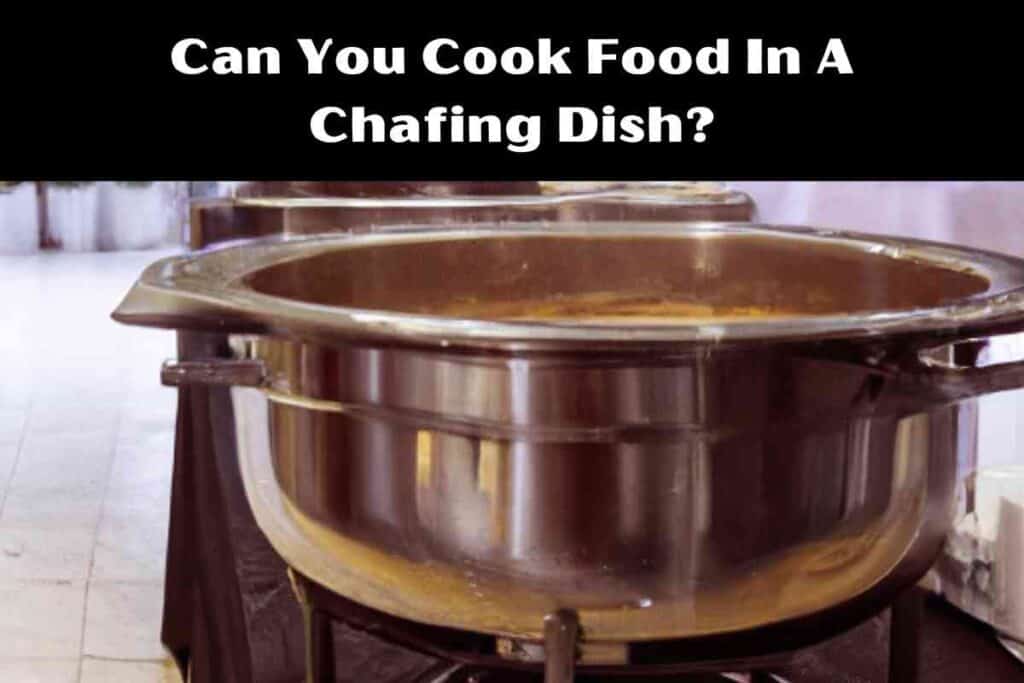
What is chafing dish?
Chafing dishes are used in the preparation of foods that need to be kept warm. They have four main components: a food pan, a water pan, a stand, and a lid.
These components are meant to hold hot food in place while preventing spills. You should use a heavy-duty aluminum foil to line the bottom of the dish.
Chafing dishes can also be used to warm up items that are cold. They do not dry out the food like an oven does, but the longer they sit, the dryer they will get. It’s also important to remember that the longer they sit, the more bacteria will grow. Fortunately, chafing dishes are designed to hold warm food without overcooking.
Originally, chafing dishes were small, portable grates raised on a tripod. They were used to prepare food in places where a kitchen was not available. In fact, they acted as the forerunners of microwaves and toaster ovens.
These portable chafing dishes could be used for cooking at the table and were also designed with covers for buffet tables. More modern chafing dishes are double-dishes with a water jacket to keep delicate foods warm and prevent overcooking.
What material is used to make a chafing dish?
Chafing dishes are used to heat foods to an optimal temperature and are made of a variety of materials. Some are made of copper or stainless steel, and some are ornately decorated.
A chafing dish is typically oval or round and can be used to serve soups or side dishes. They are also made with a lid to prevent soggy food.
For one-time use, disposable chafing dishes can be purchased. These dishes are typically used with a sterno heat source and can be found at party supply stores, department stores, and discount stores. Disposable pans typically have full-size wire racks for holding hot food.
The downside of a disposable pan is that it can’t bring food to a suitable serving temperature. Ideally, the food will already be at the right temperature before it is placed in the dish. Another type of chafing dish is an electric model.
Chafing dishes should be cleaned regularly, and you can use mild soap or detergent to clean the outer surface. Be sure to avoid using abrasive cleaning solutions, which can scratch the surface of the dish.
How well does a chafing dish cook food?
A chafing dish is a pan used to heat food. They come in several shapes and sizes and can be used to serve a variety of different foods.
The most common is rectangular, which features two fuel sources and evenly distributes heat. These are great for preparing main entrees, side dishes, and desserts.
Some chafing dishes are designed with a food thermometer so that you can monitor the temperature of the food. It is important to check the temperature of the food frequently. Foods like lasagna can take between 45 and 60 minutes to cook.
When using a chafing dish, you should never leave it unattended. Stirring the food every few minutes will make the dish look better and prevent damp food.
A chafing dish can be made of stainless steel, silver, or copper. The design is designed to keep the food warm without overcooking it. Many chafers come with a lid so the food doesn’t dry out. In addition, the water in the dish helps to prevent the food from forming bacteria.
Does cooking in a chafing dish take longer?
A Chafing Dish is a vessel for warming food in a slow-simmering liquid. The water vapor from the cooking liquid rises to the surface and forms steam, which heats the food. Cooking time is generally doubled but may be slightly shorter in extreme cases.
A chafing dish consists of 4 main parts: a food pan, a water pan, a stand, and a lid. The latter covers the food, which keeps it warm and prevents it from drying out or scorching.
A chafing dish should not be placed directly on flammable materials, such as wood, as it may catch fire. Instead, you can use heavy-duty aluminum foil to cover it.
While the food in a chafing dish may be moister than in a traditional pot, it will still need to be cooked thoroughly. You should cook beef roasts, pork chops, and poultry to at least 160 degrees before chipping it.
Food cooked within these temperatures will remain warm for at least 2 hours, but the food left for longer than that may lead to food poisoning.
Conclusion
While chafing dishes serve admirably in their primary role of keeping food hot and ready for serving, they are not suitable for cooking.
Understanding this distinction and considering the implications for safety and maintenance is essential for those working with these versatile pieces of catering equipment.
Related chafing dish articles:
- Chafing Dishes For Rent
- How To Use A Chafing Dish
- How To Store Chafing Dishes
- Can You Use A Chafing Dish Without Water
- Can You Cook Food In A Chafing Dish
- How To Keep Fish And Chips From Getting Soggy In A Chafing Dish
- Can You Put Bread In A Chafing Dish
- Do Chafing Dishes Keep Food Hot
- Can Chafing Dishes Go In The Oven
- How To Keep Food Cold In A Chafer Dish
- Where To Buy Chafing Dish
- Does Chafing Dish Fuel Expire
- Can You Reheat Food In A Chafing Dish
- How Much Water Do You Put In Chafing Dish
- How Many Servings In A Chafing Dish
- How Many Chafing Dishes Fit On An 8ft Table
- How Do Chafing Dishes Work
- What Is A Chafing Dish Used For
- How Long Can Food Stay In Chafing Dish
- What Is Chafing Dish Warmer
- Can You Keep Waffles Warm In A Chafing Dish
- What Are The Dimensions Of A Chafing Dish
- How Much Food Does An 8 Qt Chafing Dish Hold
- How Long Does Chafing Dish Fuel Last
- What Is A Disposable Chafing Dish
- What Size Foil Pan For Chafing Dish
- How Long To Heat Chafing Dishes
- How Long Do Chafing Dishes Last
- How Long Do Chafing Dishes Keep Food Warm
- How Hot Do Chafing Dishes Keep Food
- Can You Keep Pancakes Warm In A Chafing Dish
- How Many Chafing Dishes Fit On A 6ft Table
- Can You Keep Pizza Warm In A Chafing Dish
- What Is The Best Way To Clean A Chafing Dish
- How To Choose Chafing Dish Buffet Set
- Best Chafing Dish Buffet Set
- How To Choose The Electric Chafing Dish
- Best Electric Chafing Dishes
- How To Choose Disposable Chafing Dishes
- Best Disposable Chafing Dishes
- Best Chafing Dish Fuel Cans

